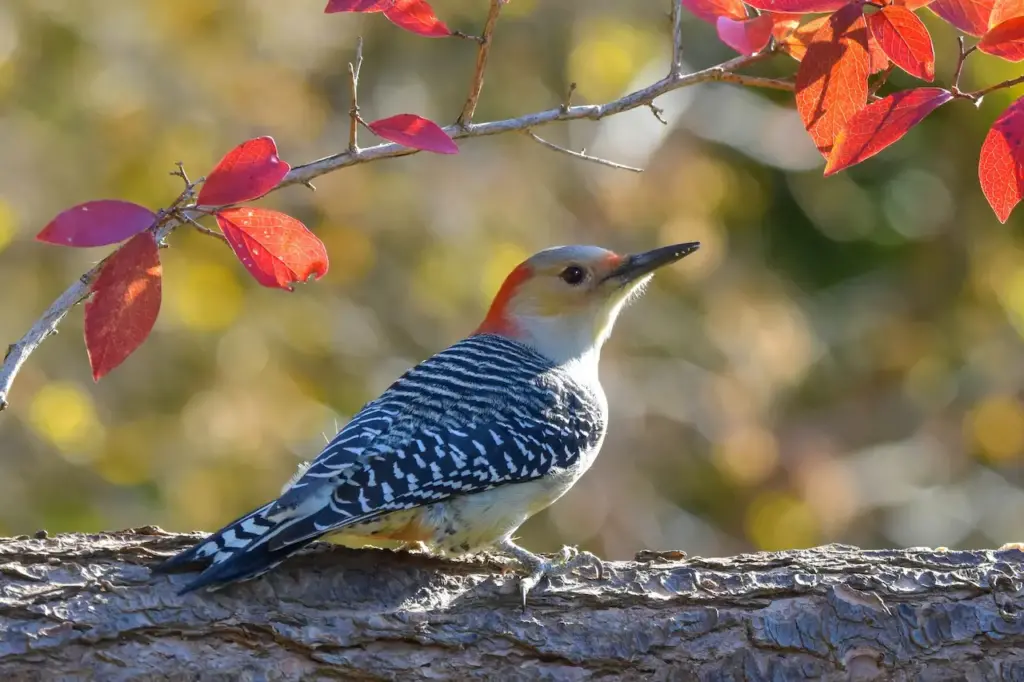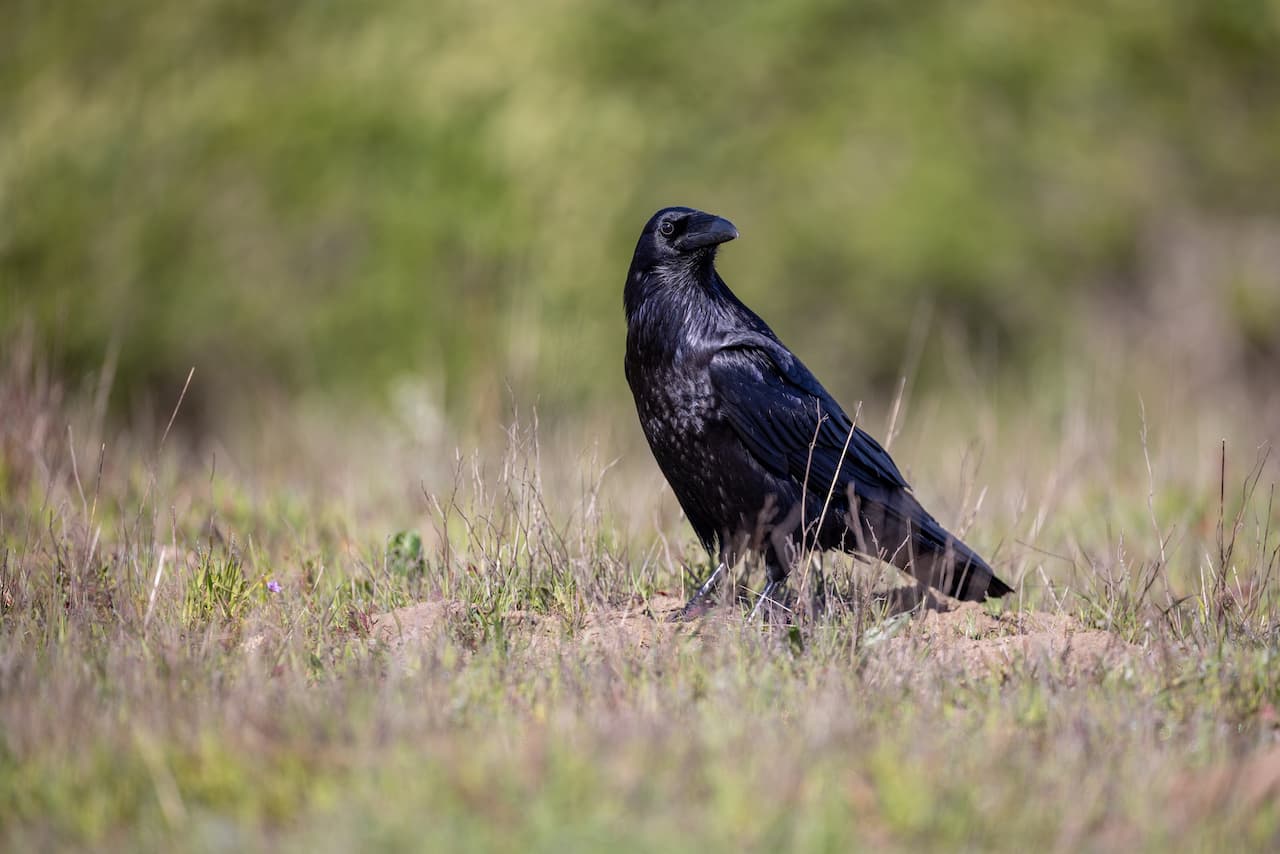Red-bellied Woodpeckers
Red-bellied Woodpeckers (Melanerpes carolinus)
Member of the Picidae Family: Woodpeckers … Sapsuckers … Flickers
The Red-bellied Woodpeckers (Melanerpes carolinus) – also known as Zebra Woodpeckers – are North American woodpeckers that were named for their red bellies and zebra- striped backs. Their most distinctive plumage detail is the male’s bright red crown. The red belly is difficult to view on a live bird.
They are closely related with the West Indian Woodpecker (Melanerpes superciliaris); and are known to hybridize to a limit extend with the Golden-fronted Woodpecker (Melanerpes aurifrons) in Texas, southern USA.
Red-Bellied Woodpeckers are fun birds to observe in the wild. They are known to “play” by spontaneously flying and dodging among trees and shrubs as if evading predators. While foraging, Red-bellies Woodpeckers move in all directions. In addition to walking, climbing and hopping along tree trunks, they also “hitch” – a unique sort of downward hopping motion.

Distribution / Habitat
The Red-bellied Woodpeckers occur naturally in southeastern North America from southern Canada (southern Ontario) south through central and northeastern United States.
In the United States, their range stretches from southeastern North Dakota, central Minnesota and northern Wisconsin east through Michigan to extreme southern Ontario and southern Massachusetts and south to Florida and west to extreme northeastern Colorado and south coastal Texas.
These woodpeckers are generally associated with forest habitats, in particular mature hardwood forests as well as mixed pine-hardwood forests, mesic pine flatwoods, heavily timbered bottomlands, swampy woods, and riparian forests. They are usually found below 2,000 feet (~ 600 meters) elevations, but occasionally as high as 3,000 feet (~900 meters).
Within their range, they are permanent residents; however, they move down from higher elevations and the northern tier of the country in winter; or may relocate whenever weather conditions are unfavorable.
Subspecies and Ranges:
Red-bellied Woodpecker (Melanerpes carolinus carolinus – Linnaeus, 1758) – Nominate form
Range: Recorded in Virginia, North Carolina, South Carolina, Alabama, Georgia, and Florida.
Red-bellied Woodpecker (harpaceus) (Melanerpes carolinus harpaceus – Koelz, 1954) – Species usually considered invalid
Range: Central and eastern Texas described.
ID: Cheeks and throat greyer.
Florida Red-bellied Woodpecker (Melanerpes carolinus perplexus – Burleigh and Lowery, 1944) – Species usually considered invalid
Range: Southern Florida
ID: Slightly smaller. More white on the upper plumage. Paler red markings on the forehead. Less white in the tail.
Western Red-bellied Woodpecker (Melanerpes carolinus zebra – Boddaert, 1783) – Species usually considered invalid – usually grouped with nominate form
Range: From north to south – recorded in Wisconsin, Michigan and adjacent southern Ontario in Canada, then south to Iowa, Illinois, Indiana, Ohio, Kansas, Missouri, Oklahoma, Northern Texas and Arkansas in the United States.
Description
Size
These medium-sized woodpeckers measure about from 9.02 – 10.51 inches (22.9 – 26.7 cm) and their weight ranges from 1.98 – 3.2 oz (56 – 91 g) – the average being 2.56 oz (72.5 g). They have a wingspan of 15 – 18.11 inches (38 – 46 cm). Males tend to be about 8-9% larger than females.
Plumage Details / Adults
Both genders have a plumage that is mostly light or dull grey on the face and below, and black and white barred on the back, wings and tail. The width of the white bars on the upper plumage increases from east to west. There is a reddish tinge to the lower abdomen.
Adult males have a bright red cap that stretches from the bill to the nape of the neck (back of the neck).
Adult females only have red patch on the nape of the neck and another one above the bill.
Other Physical Details
The long bill is chisel-shaped and blackish in the adults and horn-colored in juveniles. The legs and zygodactyl feet (two toes forward, two toes back) are dark grey.
Gender ID
The male is larger, more color with different plumage patterns.
Juvenile Description
Immature birds resemble adults, except their bills are horn-colored and they lack any red markings on the head.
Similar Species
The red-bellied Woodpecker can readily be separated from other woodpeckers native to North America by the black and white zebra pattern on their backs, and the red markings on the lower abdomen, which are, however, difficult to see in field identification.
Diet / Feeding
Red-bellied Woodpeckers mostly feed on arthropods, such as spiders and insects, such as ants, flies, grasshoppers, beetle larvae and caterpillars, and provide a natural form of pest control and help improve the health of the trees. They also take a variety of fruits (in particular oranges and berries), nuts, acorns, corn, seeds, berries and tree sap; as well as lizards, such as brown and green anoles, tree frogs, small fish, nestlings and bird eggs.
Their long, cylindrical, pointed and sticky tongue has a spear-like tip, and is perfectly adapted for excavating prey from crevices in trees. The holes they drill also provide microhabitats for other organisms. Insects are also caught in flight. Small prey is swallowed hole and larger prey is thrashed a tree or other hard surface and pecked at.
They may also visit bird feeders, particularly during the winter when insects and fruits are not readily available.
According to studies, males tend to forage more on tree trunks and females on tree limps. Males also forage lower on trees than females.
Red-bellied Woodpeckers are also known to store surplus food in cracks and crevices of trees, posts or rocks for consumption at a later date.
Breeding / Nesting
Red-bellied Woodpeckers are believed to form monogamous, seasonal pair bonds and separate after the breeding season.
Pairs generally form in early winter or late spring. Bonded pairs will select a nest site together and excavate / prepare the nest, which is often located in the decayed cavities of dead trees, old stumps, or in the limps of live trees with softer wood, such as elms, maples or willows.
In urban areas, they readily accept artificial bird nests that meet their special needs.
Most nesting activity is observed between March and April. The average clutch consists of four glossy-white, oval eggs, which are laid at one-day intervals. The naked and blind hatchlings emerge after about 11 – 12 days of incubation. Both parents share the task of brooding, feeding and protecting them.
The chicks’ eyes open when they are about 6 days old. When they are about 10 – 12 days, old, feathers project from the skin. The gender can be identified by the time they are about 15 days old. The plumage is complete by the time they are 21 days old. The young fledge the nest when they are about 24 – 27 days old. The parents will continue to feed them for up to 10 weeks after fledging.
These woodpeckers usually only raise one brood a season; but – if conditions are favorable or in order to replace a lost clutch, may produce a second.
The young reach reproductive maturity when they are about one year old.
Calls / Vocalizations / Sounds
Red-bellied Woodpeckersare very vocal throughout the year – but even more so during the breeding season. They don’t only communicate in verbal form, but also by drumming on dead trees, utility poles and other surfaces with their beaks. Drumming, tapping or “kwirr” calls are mostly used to announce their territories and in pair bond formation.
Their calls are described as churr-churr-churr or thrraa-thrraa-thrraa with an alternating br-r-r-r-t sounds.
Nestlings emit high-pitched “pree-pree-pree” calls when begging for food.
Alternate (Global) Names
Chinese: ????? … Czech: Datel karolínský … Danish: Zebraspætte … Dutch: Roodbuikspecht … German: Carolina Specht … Spanish: Carpintero de Carolina / de Vientre Rojo Estonian: Pähkli-leeträhn … Finnish: Karoliinantikka, Tammiraitatikka, Tarharaitatikka … French: Pic à ventre roux, / de Caroline … Italian: Picchio della Carolina / panciarossa … Japanese: Shimasegera … Norwegian: Lundspett … Polish: Dzieciur czerwonobrzuchy … Russian: ??? … Slovak: Tesárik ?ervenotylový … Swedish: Karolinaspett
Life Cycle
The oldest recorded Red-bellied Woodpecker lived to be at least 12 years and 1 month old.
Other Web Resources
IUCN Red List
Species Research by Sibylle Johnson




